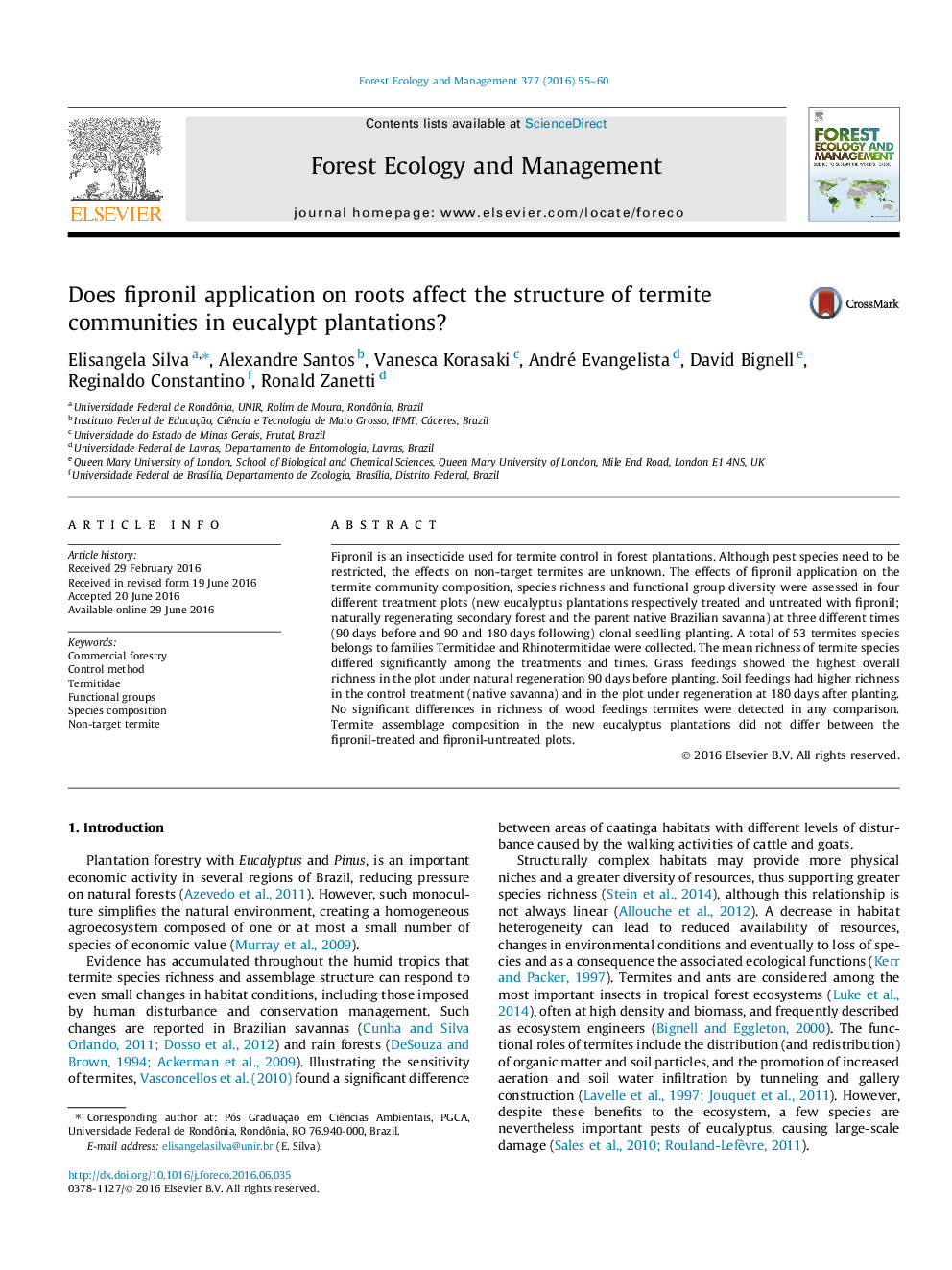| Article ID | Journal | Published Year | Pages | File Type |
|---|---|---|---|---|
| 6542067 | Forest Ecology and Management | 2016 | 6 Pages |
Abstract
Fipronil is an insecticide used for termite control in forest plantations. Although pest species need to be restricted, the effects on non-target termites are unknown. The effects of fipronil application on the termite community composition, species richness and functional group diversity were assessed in four different treatment plots (new eucalyptus plantations respectively treated and untreated with fipronil; naturally regenerating secondary forest and the parent native Brazilian savanna) at three different times (90Â days before and 90 and 180Â days following) clonal seedling planting. A total of 53 termites species belongs to families Termitidae and Rhinotermitidae were collected. The mean richness of termite species differed significantly among the treatments and times. Grass feedings showed the highest overall richness in the plot under natural regeneration 90Â days before planting. Soil feedings had higher richness in the control treatment (native savanna) and in the plot under regeneration at 180Â days after planting. No significant differences in richness of wood feedings termites were detected in any comparison. Termite assemblage composition in the new eucalyptus plantations did not differ between the fipronil-treated and fipronil-untreated plots.
Related Topics
Life Sciences
Agricultural and Biological Sciences
Ecology, Evolution, Behavior and Systematics
Authors
Elisangela Silva, Alexandre Santos, Vanesca Korasaki, André Evangelista, David Bignell, Reginaldo Constantino, Ronald Zanetti,
